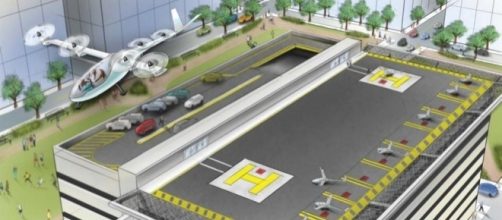People have been dreaming about flying cars ever since the release of the movies “Blade Runner” and “Back to the Future 2.” The cars in those movies might look cool, but did you ever wonder how traffic in the air would become? Did you really think that an average person can fly a two-ton vehicle in the air without any safety concerns?
A few companies don’t think so, particularly Aurora Flight Sciences, an Uber partner that is developing air Taxis that are expected to become available for testing by 2020.
The electric VTOL aircraft
This aircraft being created by Aurora does not resemble a car but more of a small plane.
It takes off like a helicopter and flies like a plane which is ideal for short trips for two people.
However, the eVTOL might be impossible to be flown with just one pilot. A helicopter has two rotors that are constantly being adjusted by a pilot at all times. The eVTOL has eight rotors, which makes it impossible to control by just one pilot.
That is why the multi-rotor craft will be equipped with a computer stabilizer to assist the pilot in controlling the vehicle.
Diana Siegel, a program manager at Aurora, said that it’s impossible to fly this plane fully manually and it has to be a fly-by-wire system out of the box.
The problems concerning the eVTOL
When a new type of vehicle is introduced, in this case, a flying one, there would have to be significant changes such as new regulations, additional Air Traffic Control and development of infrastructure that doesn’t exist today to support such flying vehicles.
In addition, imagine a number of small planes flying over residential areas. The noise the planes would create will surely bother a lot of people.
However, creators of the eVTOL said that they are designing aircraft that would make noise no louder than typical road traffic which is between 70 to 75 decibels.
Autonomous eVTOL
Self-flying air crafts might also be in the future but like self-driving cars, a lot of factors should be considered.
In fact, a research engineer at NASA’s Langley Research Center, Ken Goodrich, believes that it might take 20 years before we can see a fully automated flying vehicle.
Moreover, air traffic control will also have to be automated to handle potentially hundreds of flying vehicles in the future.
What do you think of the eVTOL? Do you think this is the future of air travel? Write your thoughts in the comment section down below and don’t forget to like and share this article.


